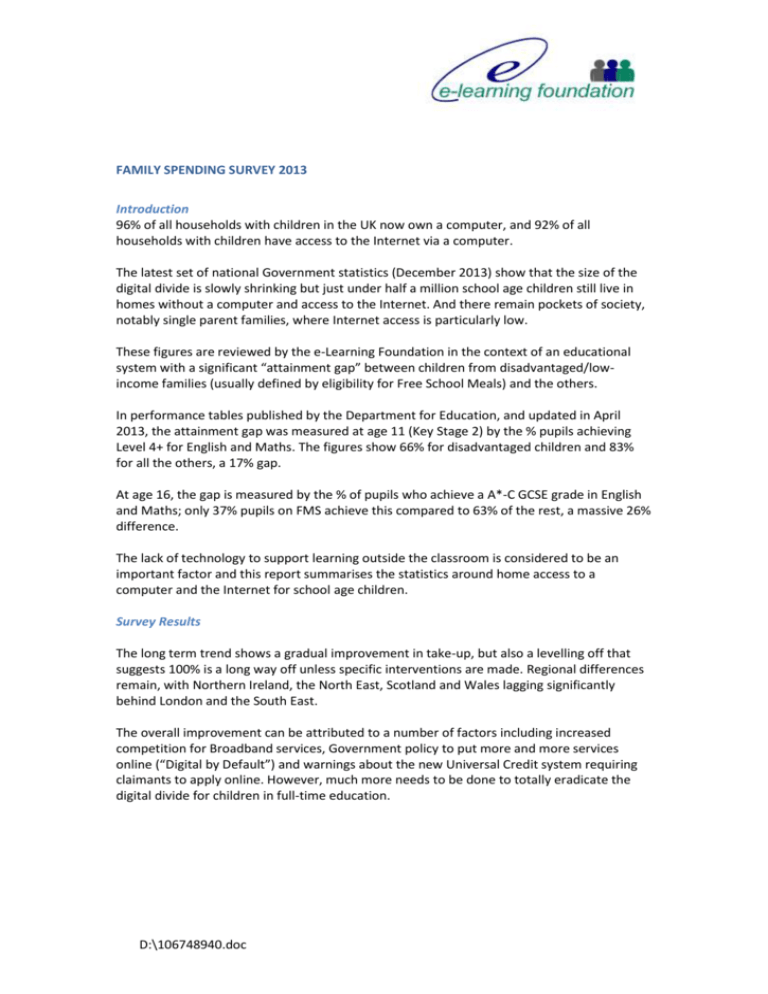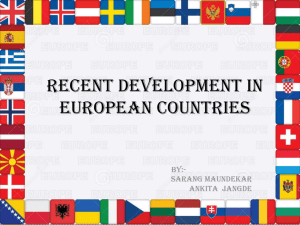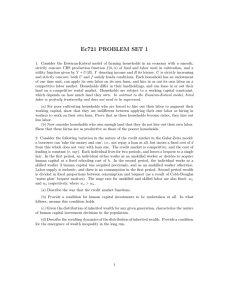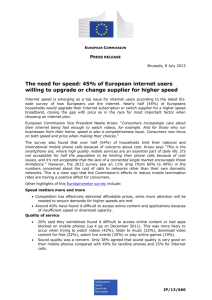View the document - e
advertisement

FAMILY SPENDING SURVEY 2013 Introduction 96% of all households with children in the UK now own a computer, and 92% of all households with children have access to the Internet via a computer. The latest set of national Government statistics (December 2013) show that the size of the digital divide is slowly shrinking but just under half a million school age children still live in homes without a computer and access to the Internet. And there remain pockets of society, notably single parent families, where Internet access is particularly low. These figures are reviewed by the e-Learning Foundation in the context of an educational system with a significant “attainment gap” between children from disadvantaged/lowincome families (usually defined by eligibility for Free School Meals) and the others. In performance tables published by the Department for Education, and updated in April 2013, the attainment gap was measured at age 11 (Key Stage 2) by the % pupils achieving Level 4+ for English and Maths. The figures show 66% for disadvantaged children and 83% for all the others, a 17% gap. At age 16, the gap is measured by the % of pupils who achieve a A*-C GCSE grade in English and Maths; only 37% pupils on FMS achieve this compared to 63% of the rest, a massive 26% difference. The lack of technology to support learning outside the classroom is considered to be an important factor and this report summarises the statistics around home access to a computer and the Internet for school age children. Survey Results The long term trend shows a gradual improvement in take-up, but also a levelling off that suggests 100% is a long way off unless specific interventions are made. Regional differences remain, with Northern Ireland, the North East, Scotland and Wales lagging significantly behind London and the South East. The overall improvement can be attributed to a number of factors including increased competition for Broadband services, Government policy to put more and more services online (“Digital by Default”) and warnings about the new Universal Credit system requiring claimants to apply online. However, much more needs to be done to totally eradicate the digital divide for children in full-time education. D:\106748940.doc Household income continues to be a major determinant of ownership. To remove the effect of low Internet and computer access in the elderly, we requested a special analysis of the data from ONS for households with children only. The figures confirm that 446,000 children still live in households without a PC, and 486,000 live in households without access to the Internet via a computer. D:\106748940.doc It is important to note the very low level of Internet access via a computer (57%) for the poorest 10% of households with children. This figure has not improved in the last 12 months and remains a challenge in overcoming the educational disadvantage caused by the digital divide. In addition, despite single parent families accounting for just 17% of all households with children (1 in 6), children in single parent households that are not online account for 42%, nearly half, of the total number of digitally excluded children. D:\106748940.doc Conclusions The digital divide remains a significant factor in the UK with children in single parent and low income families most affected. The data reinforces the need for charities like the e-Learning Foundation to continue its work to ensure every child has home and school access to the learning technologies that are now part and parcel of the 21st learning experience, enjoyed by better off children. The Mind the Gap campaign (www.mindthegap.org.uk) is an important aspect of the remaining challenge. Economic conditions, unemployment and major cuts to capital budgets in schools are making it harder for parents and schools to make provision for low income families. The Pupil Premium is one of the few sources of finance to ensure that children from low income families do not miss out on these essential learning resources. e-Learning Foundation December 2013 Sources: National Statistics Office: Family Spending Survey 2013; published December 2013 http://data.gov.uk/dataset/family_spending/resource/c076b996-e6f2-45bd-a5e17f665181596c Department for Education Performance Tables; last updated April 2013 http://www.education.gov.uk/researchandstatistics/statistics/keystatistics/b00214299/attai nment-gap-at-ages-11-16-and-19 D:\106748940.doc











